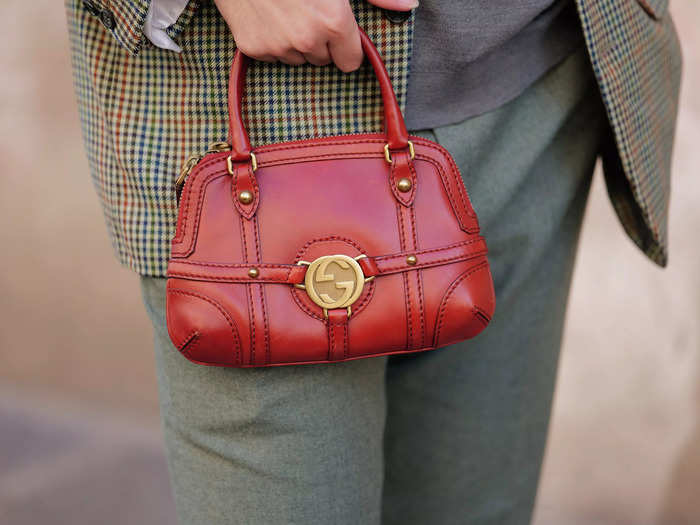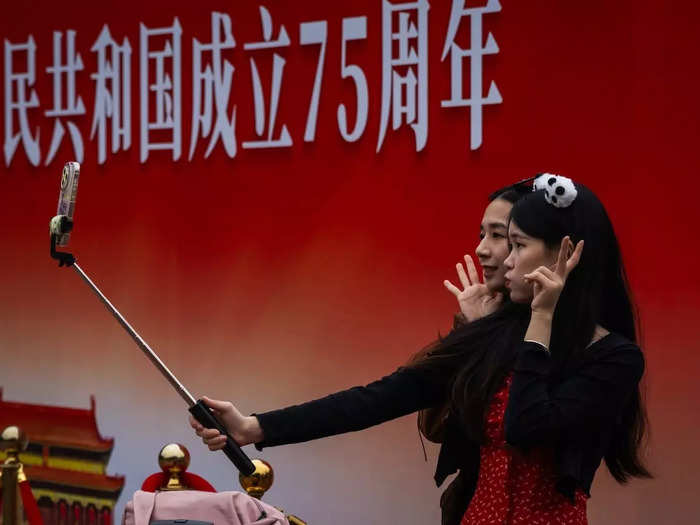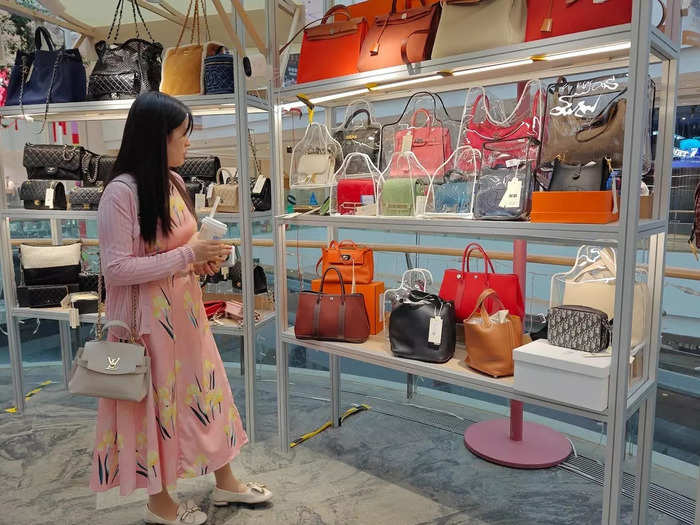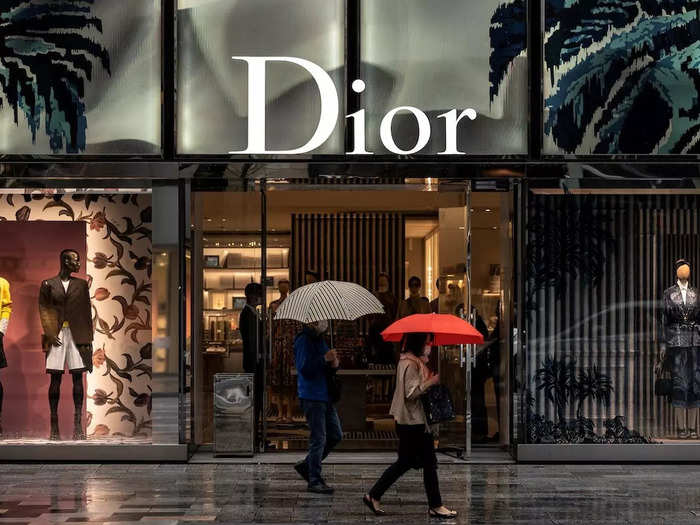Demand for luxury goods in China is slowing. Hermes; Louis Vuitton; Getty Images; Chelsea Jia Feng/BI
- Demand for luxury goods in mainland China is falling.
- The country's economy is slowing down, and some shoppers are rethinking their luxury purchases.
China, with its sheer population size and once-meteoric economic growth, has been heralded as a reliable cash cow of luxury brands for decades.
This peaked in the wake of the COVID-19 pandemic as ultra-high-net-worth and aspirational consumers amassed excess cash to spend on luxury goods.
But the golden days of luxury shopping in China seem to be fading for many luxury brands — though there are exceptions.
An ongoing property crisis, geopolitical tensions, and high youth unemployment rates have weakened China's economy and weighed on consumer confidence.
While the government is implementing stimulus packages to address the country's faltering economy, it's unclear whether these will give consumers the confidence to start spending again.
LVMH kicked off luxury earnings season this week, reporting a 16% decline in third-quarter sales in the Asia region, excluding Japan, compared to the third quarter of 2023.
In 2021, the Asia region, excluding Japan, was responsible for 35% of LVMH's total revenue. Fast-forward three years, and this has dipped by 6%.
Its rival Kering, the parent company of Gucci and Balenciaga, is due to report Q3 results later this month. In July, it reported a "deceleration" in Asia-Pacific for the first half of the year.
Asia Pacific, excluding Japan, contributed 38% of its revenue in 2021. In the first half of 2024, this dropped to 32%.
It's a similar story at other luxury brands. Hugo Boss, Burberry, Richemont, and Swatch all called out slumping sales in China last earnings season as consumers cut back.
But investors are now wondering if slowing demand is entirely due to weaker economic conditions or if there are other structural factors at play:
1. Shoppers may be sick of price hikes
Price hikes have hit aspirational consumers in China. Edward Berthelot/Getty Images
One symptom of China's post-pandemic luxury boom was "greedflation," the theory that companies take advantage of disruptions to push price increases on consumers.
"Practically every time after a crisis, people are drawn into more luxury because these are brands that give people a bit of a sense of comfort and belonging," Daniel Langer, CEO of brand development and strategy firm Équité and a Pepperdine University luxury professor, said.
He explained that many firms reacted to pandemic-driven demand by significantly increasing prices — sometimes up to 50%.
"Western brands thought, 'whatever prices we ask for, Chinese customers are going to buy us,'" Langer said.
But consumers have cottoned on to soaring prices, and outrage over price differences between China and other markets have spread on social media. This has meant that some shoppers are reevaluating which brands they purchase from, when they purchase, and where they purchase, he added.
2. Chinese millennials and Gen Zers see luxury differently
Young Chinese consumers are more in favor of low-key luxury. Qi Yang/Getty Images
Millennials and Gen Zers in China, key players in the luxury market, are also redefining luxury for themselves.
These shoppers are becoming more discerning, Olivia Plotnick, founder of Wai Social, an advertising and social media firm in Shanghai, said.
Plotnick said they seek brands with unique values, cultural relevance, and personalization rather than ostentation.
This includes opting for brands that use eco-friendly materials, support ethical sourcing, or implement sustainable production processes.
They're also attracted to niche and independent luxury firms that offer "unique" and "authentic" products, she said.
This includes designers like Samuel Guì Yan, known for his collections that put a modern twist into traditional Chinese styles, and Guo Pei, whose work is known to be proudly Chinese.
3. Travel and experiences have become a high priority
Experiences like attending concerts are higher up on the agenda of Chinese consumers now. TAS2024/Getty Images
With travel resuming post-pandemic, Chinese consumers' spending habits have also shifted.
"People are going overseas, and much more experiences are open to them," Amrita Banta, managing director of the luxury insights firm Agility Research & Strategy, said.
Whether attending a Taylor Swift concert or flying to a new destination to experience a local cultural event, experiences are increasingly taking precedence over luxury goods for some consumers, Plotnick said.
Eschewing luxury purchases for experiences also aligns with the "rural revival" trend gaining traction among Chinese Gen Z shoppers.
This trend is built around a desire for slower-paced living, making wellness and longevity the ultimate marker of luxury.
4. The government sowed the seeds of 'luxury shame'
China's government is cracking down on wealth influencers on social media. Cheng Xin/Getty Images
Xi Jinping's government has been cracking down on ostentatious displays of wealth, fueling the rise of "luxury shame" among Chinese consumers.
It started with the banning of flashy billboards with terms such as "luxury" and "high class" in Beijing in 2011. Nowadays, it's government interventions on social media influencers.
This is making consumers more selective about how they spend their money and encouraging them to be more low-key.
"Reverting back to some very communist ideas of low consumption, 'everybody should be equal' has really dampened the demand for luxury," Milton Pedraza, CEO of consulting firm the Luxury Institute, said.
5. Secondhand market
China's secondhand luxury market is growing. credit should read CFOTO/Future Publishing via Getty Images
Instead of buying brand-new products, younger Chinese consumers are also increasingly turning to pre-loved clothes selling platforms, like Vestiaire Collective, The RealReal, and Mercari, to buy secondhand luxury.
"There's been a sharp rise in secondhand luxury goods in China," Banta said. "A lot of young people like it because it's sustainable, it's a circular economy."
There was a time when buying secondhand had negative connotations in China, but it's now very much accepted, especially among millennials and Gen Zers, she added.
6. Japan is a new luxury hub
Some Chinese shoppers are taking advantage of better prices in Japan. CHARLY TRIBALLEAU/AFP via Getty Images
Instead of shopping at home, some Chinese consumers are buying luxury products abroad to take advantage of better pricing.
This includes Japan. Since 2021, the yen — the country's official currency — has steadily declined, making luxury goods more affordable there.
According to Bain, the country's personal luxury goods market increased from 29 billion euros ($31.4 billion) in 2023 — a 27% increase from the year before at constant exchange rates. And luxury brands have continued to report strong momentum in this market throughout 2024, touting it as new luxury hotspot.






